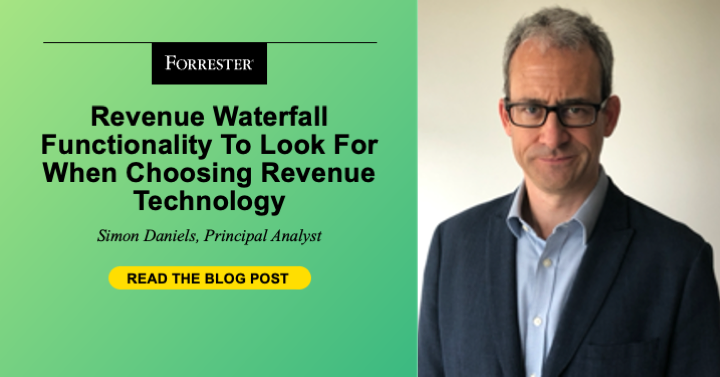As the summer falls behind us and the temperatures finally return to more autumnal levels, thoughts turn to EMEA B2B Summit that’s just a few weeks away in London. One of the topics I’ll be speaking on is accelerating the move from MQLs to an opportunity-based waterfall, properly reflecting the reality of demand management across the revenue ecosystem. A point I’ll make is that revenue technology vendors are increasingly incorporating support for this approach into their solutions, rather than treating every marketing engagement as an individual lead. When considering adopting the Revenue Waterfall and the technology required to support it, what should revenue technology decision makers be looking for and asking vendors about?
Revenue Waterfall technology checklist
Keep these points in mind when evaluating revenue technology to support the adoption of the Revenue Waterfall.
- Signal handling. A key tenet of the Revenue Waterfall model is the identification of buying groups and the individuals making them up. Ask about the signals that the platform you’re evaluating can process and the context in which it does so. What sort of signals can it handle (response, engagement, intent) and do they work across individuals, accounts, and solutions?
- Buying group compilation. So that buying groups can be compiled, establish whether there is any automation for linking signals together and systematically combining individuals. Some solutions are starting to use AI to do this, offering strong support for streamlining this aspect of the process.
- Working at the right level. While it’s tempting to adopt a “marketing qualified account” approach, this still represents demand at the wrong level. Particularly for businesses with multiple solutions, it can be confusing for Sales when presented with an account spanning multiple buying groups. Similarly, some platforms make it possible to track demand at account level, the drawbacks soon become apparent, so look for solutions that handle true opportunity-level demand management.
- Balance automation and review. As Revenue Waterfall adoption becomes more sophisticated, automation will play an increasing role. Nonetheless, there should still be the ready facility for human review and intervention, especially around buying groups and qualification. Look for workflow support that makes this process as efficient as possible.
- Integration. Moving away from a focus on individual MQLs can be a big step for some platforms. Make sure you consider how systems will integrate and pass this insight along the demand process without necessitating low value manual intervention. In particular, leads ideally never need to be created at the handover stage and move straight to becoming contacts, accounts, and opportunities.
- Buying group scoring. Another important aspect of the model is to be able to assess the potential value of the overall buying group and not just individual leads. While the value of a buying group is in part the sum of its members, those individuals in combination also matter. Ask about support for buying group scoring
- Reporting. Moving to an opportunity-based waterfall undoubtedly entails new approaches to reporting and measurement of demand generation activity. The focus now falls on intent signals, buying groups, and opportunity status. Make sure solutions being evaluated can accommodate these aspects and move away from tracking only individual leads.
Don’t settle for “good enough”!
Revenue technology decision makers who are also involved in moving to a Revenue Waterfall model must consider their next generation technology requirements. As we always say, adopting an opportunity-based waterfall is not predicated on new or additional technology. That said, tools are increasingly offering support for this approach, so it only makes sense to take advantage.
Join me at EMEA B2B Summit to learn more about how to accelerate the goodbye to MQLs and move to the Revenue Waterfall, along with many other sessions to fuel your revenue engine. Forrester clients can also book a guidance session to discuss how to embark on and accelerate their Revenue Waterfall journey.








